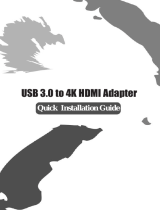
Table of contents
1 Getting started ................................................................................................................................................ 1
Identifying components ........................................................................................................................ 1
Top and front components ................................................................................................... 1
Rear components ................................................................................................................ 2
Left component .................................................................................................................... 3
Setting up the USB port replicator ........................................................................................................ 4
Step 1: Connecting to AC power ......................................................................................... 4
Step 2: Connecting to the computer .................................................................................... 5
Step 3: Prevent the computer from sleeping ....................................................................... 5
Setting up the software ......................................................................................................................... 6
Using the software ................................................................................................................................ 7
Using DisplayLink ................................................................................................................ 7
Using Windows properties ................................................................................................... 7
Using additional software features ....................................................................................... 8
Standby, Sleep, Hibernation, shutdown, and restart ........................................................... 8
2 Using the port replicator ................................................................................................................................ 9
Port replicator guidelines ...................................................................................................................... 9
Connecting to a network ..................................................................................................................... 10
Connecting USB devices .................................................................................................................... 11
Connecting to a DVI display device .................................................................................................... 12
Connecting an HDMI device ............................................................................................................... 12
Connecting audio ............................................................................................................................... 13
Connecting analog audio devices ...................................................................................... 13
Connecting an optional security cable ................................................................................................ 14
3 Disconnecting the port replicator ............................................................................................................... 15
4 Troubleshooting ............................................................................................................................................ 16
Solving common problems ................................................................................................................. 16
General use and connection problems .............................................................................. 16
Audio problems .................................................................................................................. 17
Video problems .................................................................................................................. 18
Getting more information .................................................................................................................... 19
Contacting support ............................................................................................................................. 19
iii




















